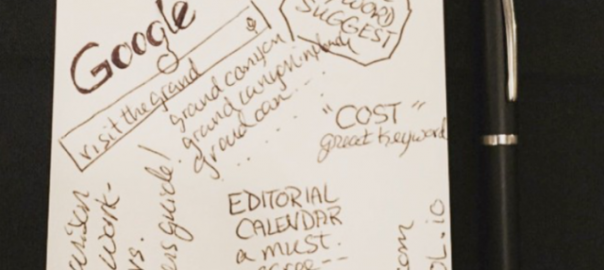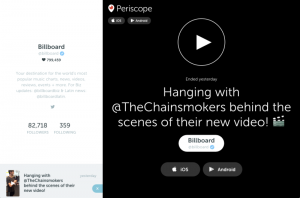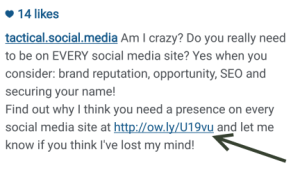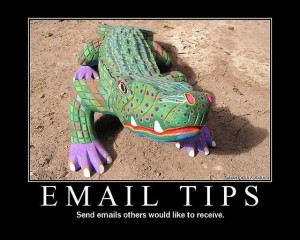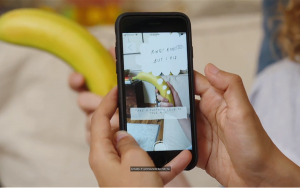
When the Marketing Comms team here at PR Newswire began a group book club, I suggested The Doodle Revolution by Sunni Brown as our first reading assignment. Although we already had an appreciation for the power of visual storytelling, this book goes beyond that common argument and elevates the simple doodle as a way to bring visual communication to the masses.
While following the #CMWorld hashtag during last week’s Content Marketing World, I saw a number of great visual session summaries produced by Kelly Kingman (@kellykingman). These graphics were excellent examples of the principles covered in The Doodle Revolution.
I reached out to Kelly for her expert insights as a graphic recorder and was delighted to discover we share a passion for encouraging everyone to engage in more visual communication.
“Day 1 Closing Keynote” by @JohnCleese – #KeynoteInks for #CMWorld pic.twitter.com/O9hDgxYAuh
— Kelly Kingman (@kellykingman) September 9, 2015
Adults Can’t Draw? Wrong.
When you ask an adult to draw, the most common response is that they can’t. Society’s typical way of thinking breaks down to “Drawing equals Art, and Art should be left to Professionals.”
But ask an adult to doodle, and suddenly you unlock the potential of visual communication.
Doodles don’t require a lot of skill. They don’t need to look perfect, but that doesn’t mean they don’t get the job done.
Kelly observed, “The belief that you need to be an artist to use drawing is like thinking you have to be a professional builder to use a hammer, and then *only* to build a house. The truth is that anyone is capable of using elements of drawing in their work. The building blocks are really simple: lines, shapes, arrows, color, even words themselves.”
Did you know that even some creative professionals will tell you they can’t draw? Luckily, that doesn’t stop us from sketching out our ideas, allowing us to “see our thinking” to better work through the problem. This same process applies when solving a non-creative problem.
According to Brown, “Doodling is thinking in disguise.” By mapping out connections between concepts through the physical act of doodling, we can extend our mind to the paper. Now that our brain doesn’t have to work hard at simply remembering the concepts, it can more easily process connections and solutions.
Research has also found that doodling increases retention, recall and comprehension. And, when used in a group setting, it can provide big-picture access, stimulate creative thinking and facilitate problem solving.
Need more convincing? Watch Sunni Brown’s TED talk:
How to Embrace Doodles and Banish Your Fears
It may be a bit cliché, but “fake it ’til you make it” can help you get past any misguided beliefs that you’re not talented enough to doodle. As with most intimidating activities, the more we do them, the less daunting they become.
Start by observing the natural components of your Doodle DNA, defined by Brown as your “unique visual-linguistic stamp.”
Identifying the types of doodling you instinctually gravitate toward can help you work from your strengths and build your visual vocabulary.
Which of the following apply to you?
- Word Doodler – Do you write a word or phrase and then trace or repeat them?
- Nature Doodler – Do your notes start growing flowers, leaves or anything outdoorsy?
- Abstract Doodler – Do you sketch triangles, squiggles or other geometric patterns?
- People Doodler – Do you draw figures and faces?
- Picture Doodler – Do you draw recognizable representations of objects?
When asked if she had any advice for those who wanted to hone their visual communication skills, Kelly shared two suggestions for getting comfortable with showing your work – either make it safe or do it anyway:
“Making it safe could include starting in your personal sketchbook and using simple elements like colors, boxes, bullets and arrows – think of it as doodling! Making images out of the words themselves is a great first step. Practice using podcasts or a TV show, keep it light and fun and low stakes. Pick a simple set of icons for concepts you come across a lot, and practice them until they feel like writing your A-B-C’s.
“The ‘do it anyway’ method is the route I chose – it’s more like ripping off a Band-Aid: just get up there and practice! At your next meeting, just go up to the whiteboard and start taking notes, and challenge yourself to add a little icon to each idea. Share your visual note taking experiments with colleagues to bring them up to speed on meetings and conferences. Draw out some of your ideas the next time you give a presentation.
“You’ll be amazed how much people appreciate even the tiniest amount of visual communication, even if you think your attempts look awful. Your bravery will inspire others’ to try, too.”
5 Ways to Incorporate Doodles in Your Work Life
1. Extend your brain.
Practice your visual communication skills (aka doodling) in the ultimate low-risk environment. Sketch notes while reading or listening to important information. You’ll be amazed at how much more you recall even weeks later.
2. Strategize with your team.
Use a whiteboard to sketch out charts, diagrams and processes during strategy sessions to visualize the big picture and get everyone on the same page. Combine sketches with Post-Its for an easy way to rearrange and prioritize ideas.
3. Provide guidance to your designer.
If you have an idea of what you’re looking for when working with a designer on a project, don’t be intimidated – break out the pencils and paper. Even a simple doodle can help your designer gain a better understanding of how something is mapping out in your mind. I guarantee results will be closer to your initial vision.
4. Share your visual notes.
Doodling your notes at an event will not only help you better understand and retain the information, but you now have a unique visual element to share on your social channels. After reading The Doodle Revolution, my coworker decided to sketch notes at a live event. After sharing her doodle on Instagram, she was pleasantly surprised at the resulting engagement her image received.

5. Add doodles to your content’s visual story.
Looking for a cost-effective way to add visuals to your next piece of content? Consider a doodle. While I wouldn’t recommend adding a doodled sketch to a gated research report, they can be a quick and easy solution for effectively communicating in a more casual environment, like your organization’s blog, Facebook or Instagram. With practice, you could even live doodle during your next corporate event. Or maybe we’ll just leave the live graphic recording performance to more talented professionals, like Kelly.
Incorporating even simple multimedia components into your content can make a dramatic difference in its effectiveness. Fortunately, your options for visual storytelling tools are greater than ever thanks to the rise of techniques like doodling.
Want to learn more about using visuals to tell your brand’s story? Download Setting the Record Straight: Press Releases that Stand Out in the Digital Age.
Business & Finance Articles on Business 2 Community(138)
